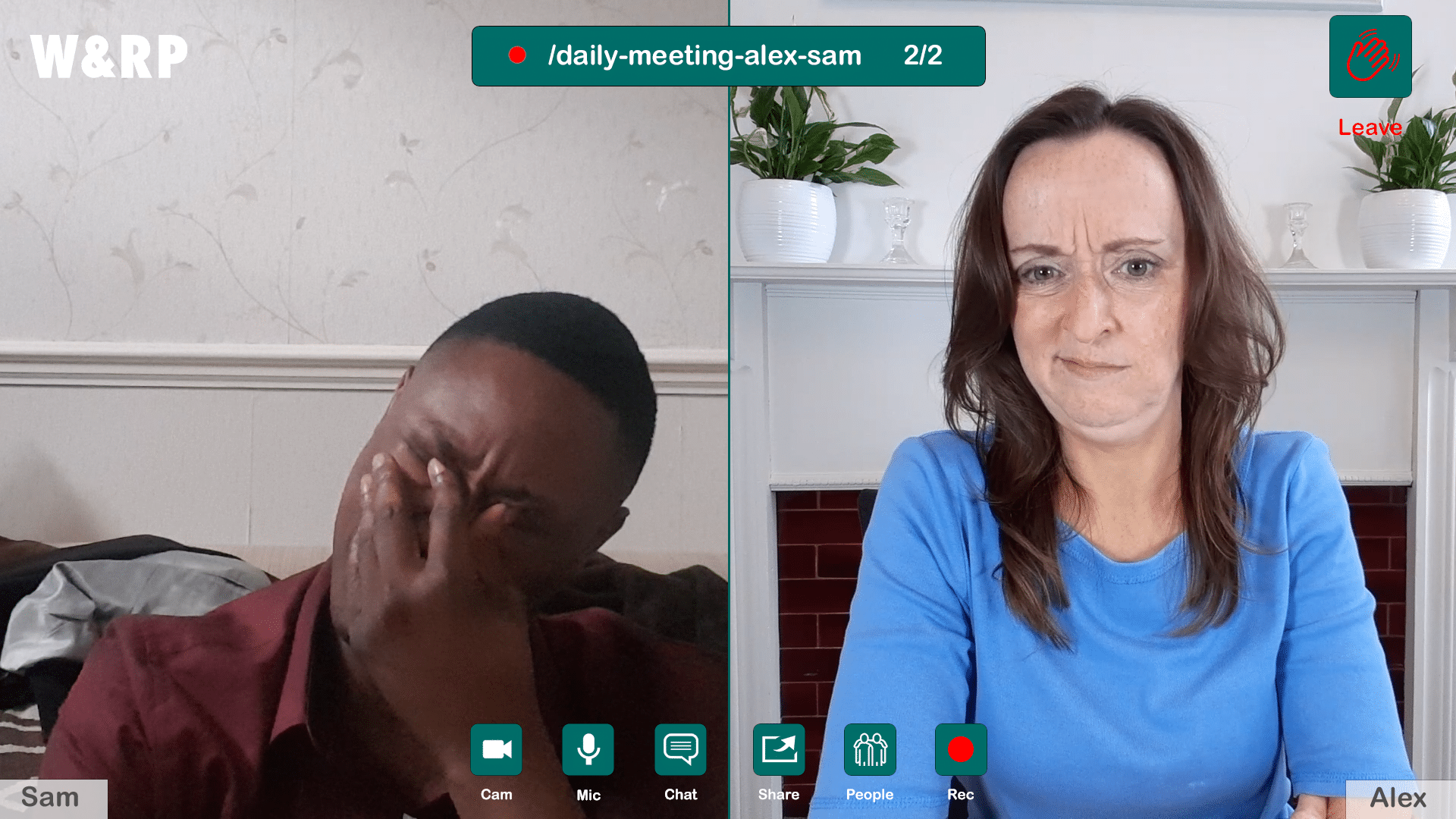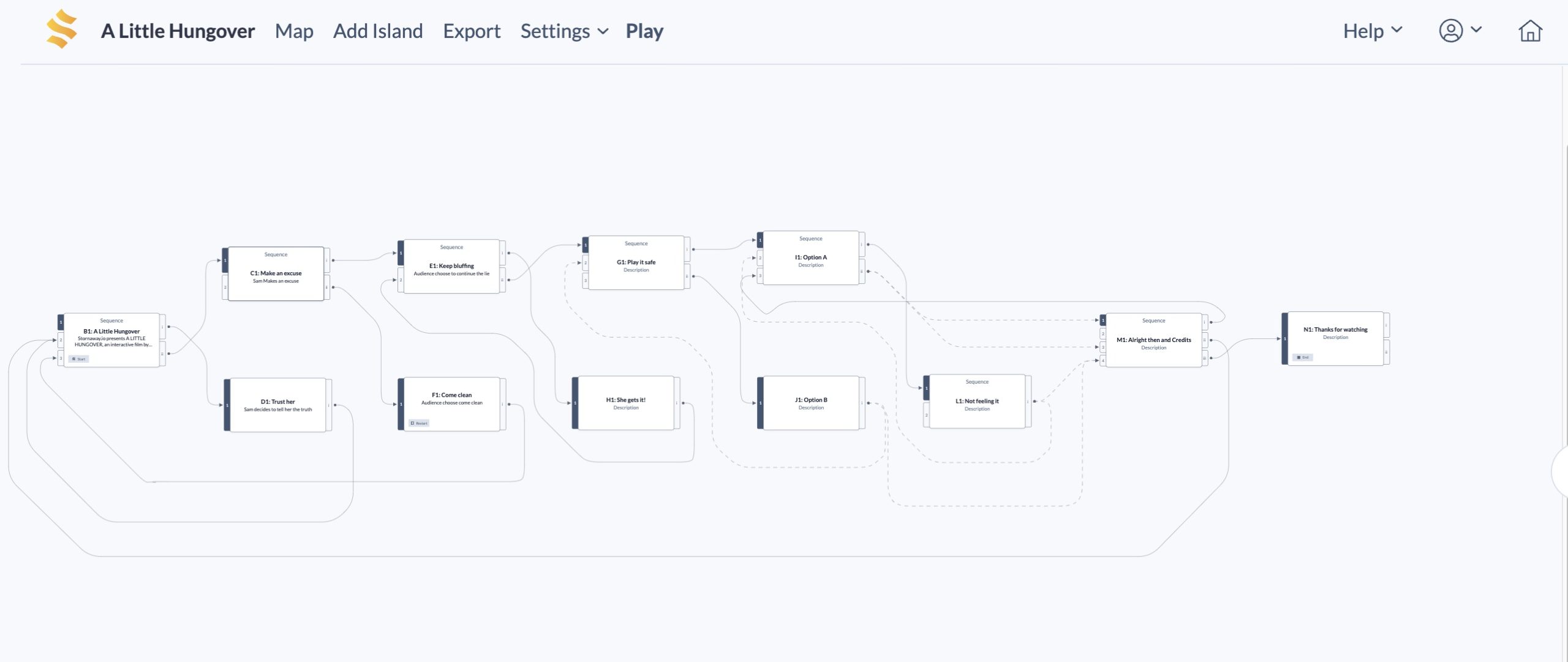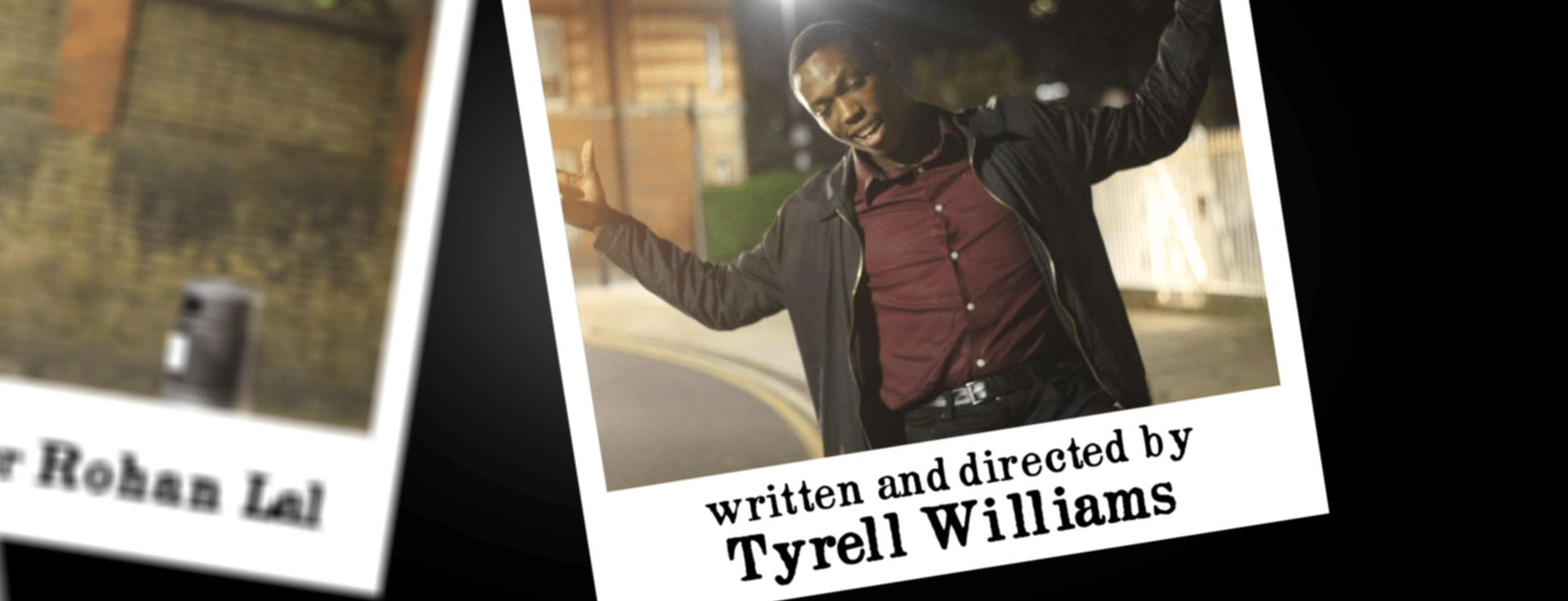Written by Abbie Horning, November 2022
Created in the Summer of 2020, in the middle of lockdown, Tyrell Williams directed this short interactive comedy whilst Stornaway.io was being beta-tested by film and TV directors. The film premiered at Encounters Film Festival.
A Little Hungover is the first interactive film from Tyrell – A (Zoom) work meeting between a boss and an employee, where the viewer has to help the employee – who was still feeling the effects of the drinks the night before – to get through the meeting.
And we found that people’s responses were definitely affected by whether they identified with the boss or the employee!
Now, two years on, Tyrell has just won a George Devine Award with the coming-of-age play Red Pitch, having been named Best Writer at the Stage Debut Awards earlier in 2022.
Let’s look back on the process of making Tyrell Williams’ first interactive production – in the middle of a Global Pandemic with strict lockdown periods – using Stornaway.
A Short Interview with Tyrell Williams: Creating his First Interactive Film
Where did the idea for “A Little Hungover” come from?
Conversations, between Kate Dimbleby (A Little Hungover Producer and Co-Founder and Creative Director of Stornaway.io) and me.
After initially being put in touch, Kate and I emailed and eventually got on zoom. In the midst of a strict lockdown period, we were brainstorming ways to tell interactive narrative stories whilst still adhering to the safety guidelines.
Watching The Unbreakable Kimmy Schmidt: Kimmy vs The Reverend was crucial in my understanding of what could be achieved in interactive narratives.
It showed me what fun could be had with the form, how you could acknowledge it, break the fourth wall and develop an exciting relationship with an audience.
Shortly after watching it, I got the idea for a comedy where a work meeting between a boss and an employee was taking place and the employee was off his face struggling to get through the meeting.

Starring Patrick Elue (Sam) and Elizabeth Hammond (Alex) and was written and directed by Tyrell Williams, co-writer and director of the viral web series #HoodDocumentary (BBC3/YouTube).
What were your expectations when you started?
I really didn’t know what it’d be like. My only prior knowledge of interactive narrative film was Black Mirror: Bandersnatch, which I had read was challenging for the creative team to make. So I didn’t know. Went with it.
What was your experience of working with stornaway.io?
Terrific! Such a great team – very understanding, friendly, and forward-thinking. Also, very patient as I was familiarising myself with the Stornaway software and also how to structure a story of this kind. Inspiring on the whole.

How was it different to writing and planning a linear film?
There were similarities and differences. Of course, you’re still storytelling so there’s that aspect of making sure the fundamentals are there, i.e. character, plot. But I found, for me, there was an added complexity in keeping on top of the different “paths” or “journeys” and keeping them interesting.
The Stornaway software was very useful in helping with this, demonstrating beat by beat how each path would unfold.
There was definitely an added layer of mathematics to it I thought.
How did you film it in only one day?
We did it via Zoom. Each actor had two phones. One that they’d record themselves on and that they were acting to and then the other where they would be in a production team zoom call.
This way, the actors were able to hear and respond to one another, hear my direction and also communicate with production and get tech support. Whilst production and tech were present in the meeting, they were on mute and hidden in the call allowing the creatives to get on with it.
Before filming, we set up which took roughly 2 hours adjusting the framing and finding the right light. As I was not able to see the frame, I asked for sample videos to be WeTransferred over so that I could verify I was happy with the actors’ framing.
We also did sound tests, we recorded into our phones and also external mics to make sure that they were at the right levels.
The fluidity of the shoot was assisted by multiple pre-production Zoom calls, which the actors were a part of and a rehearsal a week before where I was able to discuss the characters and story with the actors and also where we got to trial the set-up and make any adjustments for the shoot.
Has the process surprised you?
I was pleasantly surprised at how successful the filming went – not that we didn’t prepare very well but the shoot was heavily reliant on tech and we made it through with very minor, if any at all, technical difficulties.
What do you think writers and filmmakers need to think about when making ‘pure’ interactive films like this?
There’s something intriguing about seriously considering the psychology of an audience when working on “pure” interactive films like this. In a way, I think it’s useful to pre-empt the audience’s decisions and then write with that in mind.
Whilst I believe that the true visceral experience of theatre is irreplaceable, there’s an interesting relationship that forms between creatives and audience that shares qualities with immersive theatre.
Would you like to make more interactive films and if so, is there any would you do more of or differently?
Yes, I would like to do another and of course, we learn and we grow so there are things that I would do differently. Namely, creating more paths and complex journeys for audiences to enjoy.

